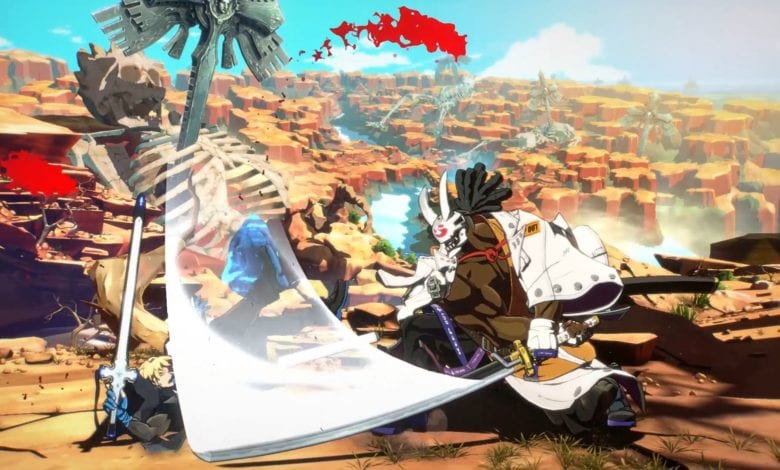
Preview: Guilty Gear Strive
I can’t help but to feel like I’m in withdrawal. Much like how the Phantasy Star Online 2 North American beta left me in a state of emptiness, the Guilty Gear Strive open beta has left me detached from my other fighting games.
One could not adequately describe this feeling without:
- Understanding what great online matchmaking is supposed to feel like.
- Having an unhealthy devotion to the world and lore of the Guilty Gear franchise.
I want to make it clear that I went into the open beta with tempered expectations. Last year’s closed beta left me in a different kind of shock: lack of gatlings, stripped down command lists, a non-functioning user interface. On the outside, I remained optimistic, but internally I expected nothing, which is a strange feeling to have when you’re supposed to be gearing up for your favorite fighting game series.
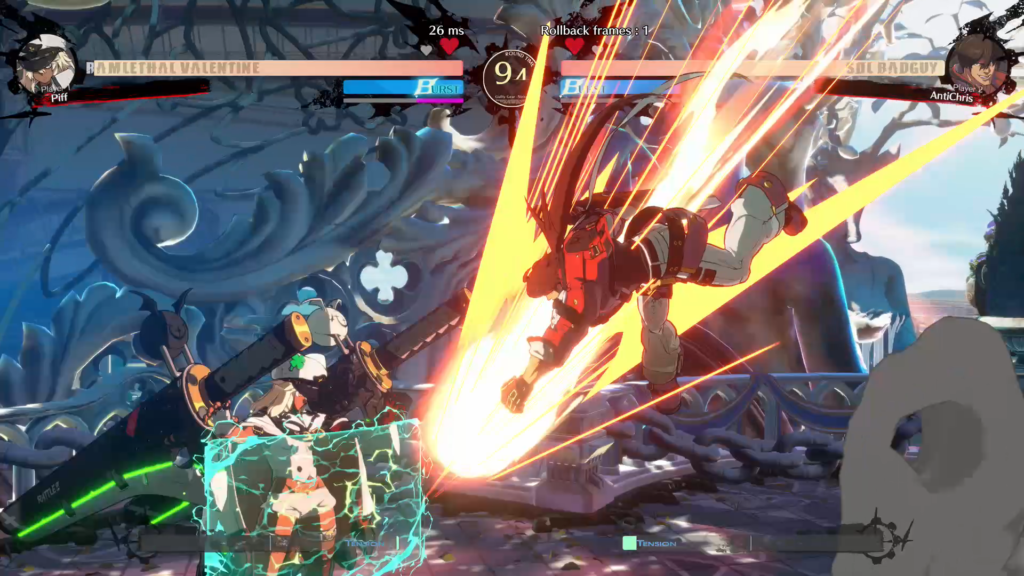
In reality, the last weekend was monumental for a myriad of reasons for the fighting game genre. The bar has been raised, goal lines pushed, whatever your want to call it. Daisuke Ishiwatari and Arc System Works put the whole industry on notice – and if April 9th’s release proves to have been just a taste of what’s to come, a new era of fighting games has just begun
No time to delay
I’m going to start off with what is considered the crowning achievement for Guilty Gear Strive. The implementation of rollback netcode was impeccable. If there is anything that you take away from this piece, it’s that online play is near flawless. That’s not to discredit other games like Mortal Kombat 11, Killer Instinct, or Skullgirls. Those games also have great netplay with there own versions of rollback. But I was playing lossless matches with people in South America, mainland Asia and Japan, – regions I couldn’t even dream of connecting to on delay based netcode.
I briefly covered it in my review for Granblue Fantasy Versus, but I’ll touch on it here again: rollback netcode is a classification of middleware that provides a near lagless experience for peer-to-peer connections. Every input is recorded in a log and is executed on the local device, which then sends that information to the machine you’re connected to. While that information is being sent to the opponent’s machine, the device’s AI is predicting your next input in real time. If in the event that input is incorrect, the netcode corrects itself by “rolling back” the state of the game a specific number of frames, preserving the pace of the match.
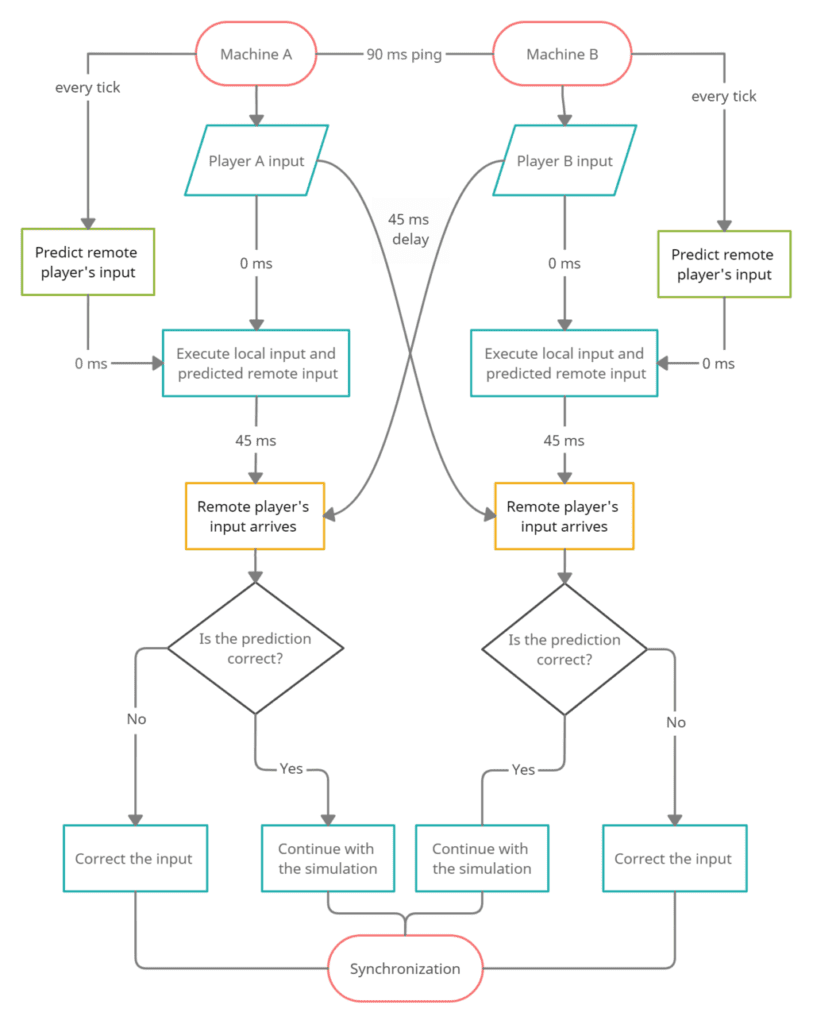
This differs from delay based netcode as the log of entries is transferred to each of the players simultaneously. This sounds ideal, however, when data is traveling over long distances (New York to Los Angeles), the gameplay will stop as the machines are requiring more information to continue the match. This causes brutal periods of lag which can lead to missed inputs and connection failures in the event of a desynchronization between the machines. For this reason, the preferred method for tournament play was local co-op, which could be problematic for players who couldn’t attend events for whatever reason.
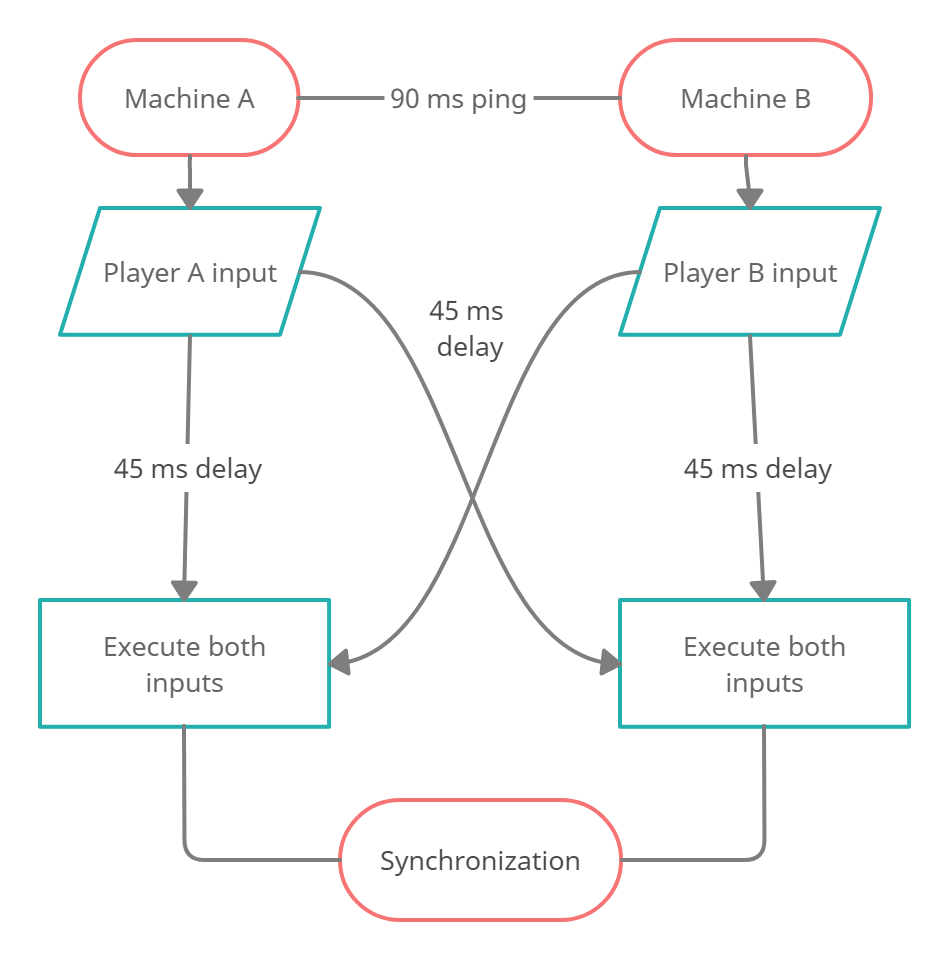
When the Covid-19 pandemic began in 2020, it spelled out the death of the fighting game community. Major tournaments crumbled to the health guidance pushed by local and state governments, and local communities struggled to rally up the support for fear infection (rightly so). Online events became more common place, but for games like Guilty Gear Xrd Rev 2, it became incredibly difficult for online communities to thrive when netplay between neighboring counties was heavily flawed.
Guilty Gear Strive has blown all expectations out of the water. Outside of a single match against a player from Europe (and I played many), I never felt a single frame of lag. Matches played out smooth like warm butter, no fear of dropped combos to be found. I mean, with this level of quality netplay, we could be looking towards the horizon of worldwide online tournaments being a possibility.
“Here Comes Daredevil”
Speaking of the gameplay, one of the biggest points of contention in the build up to Guilty Gear Strive has been its revised combo system. Guilty Gear historically had adopted the “gatling” combo system, which allows players to freely chain lower-level “normals” into higher-level “normals,” and then into special attacks and “supers.” There’s also critiques that Arc System Works is trying to pander to a demographic outside of its dedicated playerbase by removing okizemi and slowing the high-paced tempo seen in Guilty Gear Xrd Rev 2.
This “wild west” approach to testing and learning combos has been championed by longtime fans of the series as a tried and true method to promote creativity and expression – myself included.
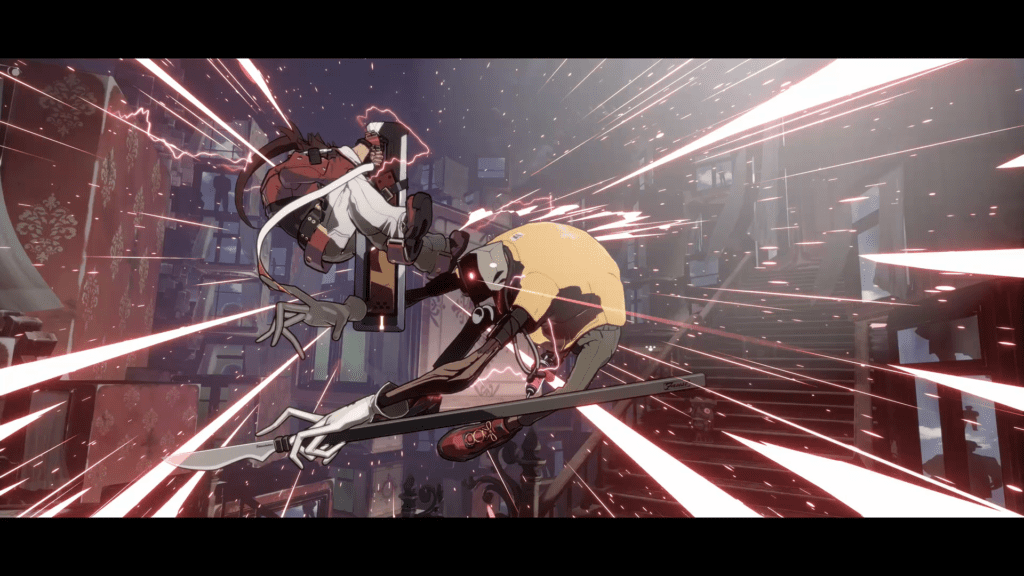
While it’s true that combo routes have been reduced, gatlings have not been completely removed. Low-level normals can now chain into command normals, which could then blossom into their own unique combo routes. And though you cannot gatling punch, kick, slash, heavy slash into a special, you can still discover new combos and frame traps naturally or by going into Training Mode. In the roughly 25 hours and 400+ matches I played, I felt that the gameplay of Strive has definitely been tempered, but there’s still enough depth in the characters to keep me coming back. After every loss, I found myself back in the Training room labbing potential answers to reversals and combo routes that caught me off guard.
I can also confirm that okizemi has not been completely removed from the game. While it’s no Rev 2, scoring those knockdowns is incredibly viable to success. May and Millia have some insane wake-up conversions, and executing an overdrive while the opponent is in a wall splat status will give you okizemi when you reset to neutral. Strive still plays like Guilty Gear, but you can definitely see the connections to Street Fighter.
Where’s my Dead Angles?
With the revision of the combo system also came major changes to universal mechanics. The Dead Angle Attack was a defensive mechanic that at the cost of 50-percent meter, you could force the opponent off you mid blockstun. This was a risky, yet viable technique that would give you a chance to retaliate at the cost of potentially being punished due to its long recovery window. There’s also the Blitz Shield, which can reflect projectiles, repel attacks and even stun the enemy for 25-percent meter.
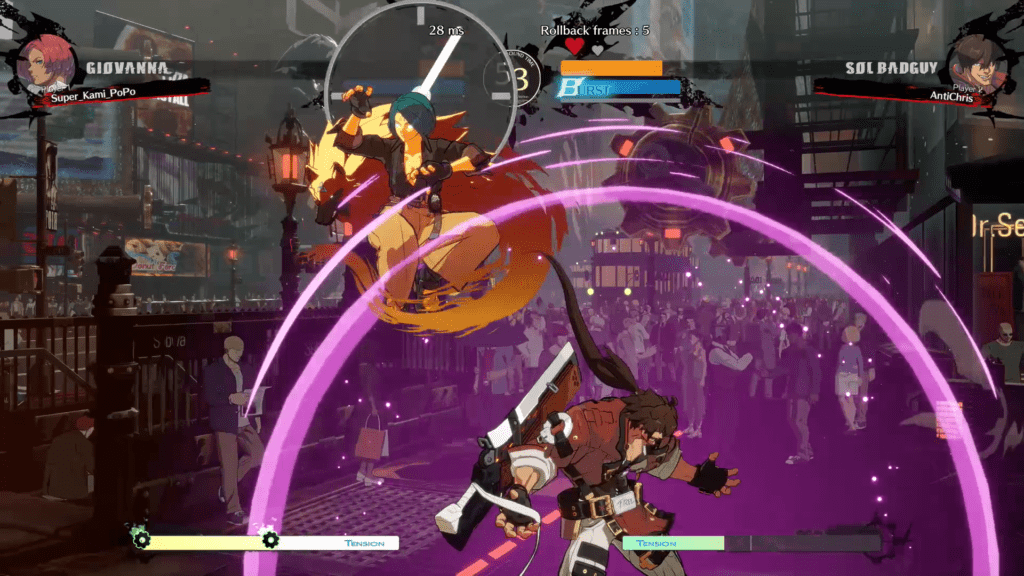
Both of these mechanics have been removed in favor of expanding the Roman Cancel System, which allows you to suspend the animation of almost any action to revert back to a neutral stance. They’re typically used to extend combos or as a panic option to defend from punishing overdrives, however, Roman Cancels have been reorganized and expanded to encompass previous methods of play.
All Roman Cancels now have a shockwave effect that can place a slowdown effect on the opponent, potentially making your next action plus on block. In addition to the shock wave, players can dash cancel ahead of the Roman Cancel to reposition themselves in a more favorable screen position. Red Roman Cancels are activated on hit, allowing you to extend the combo seamlessly. Inversely, Blue Roman Cancels activate while in a neutral state to also slow the enemy down and potentially bait out a reversal while keeping you plus. Purple Roman Cancels activate before or after an attack, suspending animations and saving you from a potential whiff punish. Finally, Yellow Roman Cancels have replaced the Dead Angle Attacks, activating while in blockstun, pushing the enemy back and allowing you to begin your counter attack.
Other newly introduced mechanics include the Instant Faultless Defense, a combination of both Instant Block and Faultless Defense that will both prevent chip damage and push the enemy back a greater distance. The loss of Blitz Shield creates a gap for options in reflecting projectiles, however, using dash cancels with your Roman Cancels allow you to phase through incoming bolts and continue the pressure game.
Lost in the Lobby
If there was one glaring issue that Guilty Gear Strive faces ahead of release, it’s the poor lobby system implementation. I’ve never been one to pull punches, and there’s no reason to start now: the lobbies are absolute dogshit. Ranked mode places you into this pseudo tower of random lobbies where players are paired have to walk up to each other and initiate a match. While everyone is willing to pair up, the system struggled to initialize matches between players and matches being dropped was common place. Even when you thought you finally connected, if the loading screen showed that you were assigned a different character, you knew you were heading back to the lobbies.
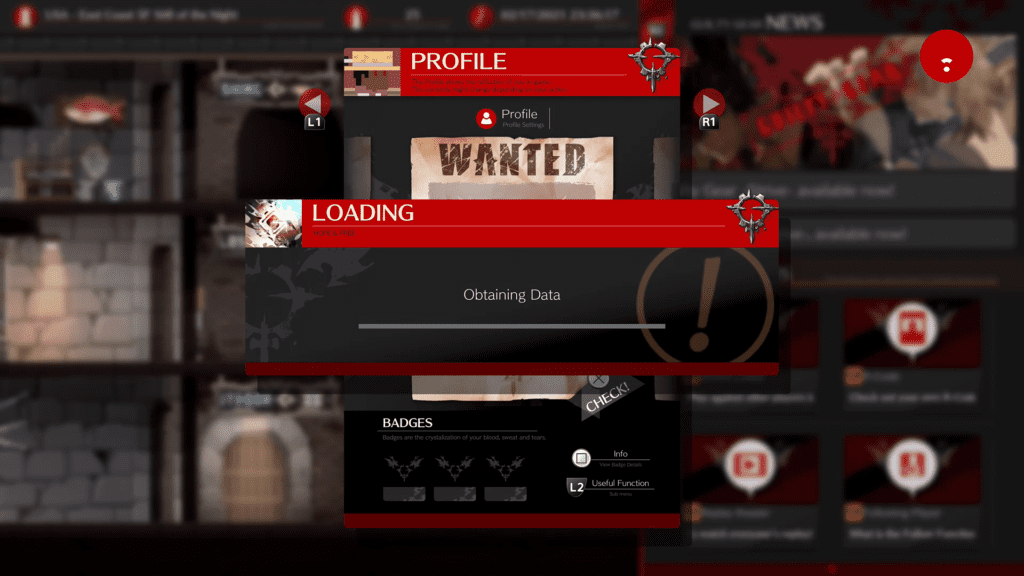
The more frustrating happenstance occurs when you’re trying to ready up with your opponent. Your pixelated avatars have a post match animation that will either express victory or defeat, which thereafter you’re able to ready up for another match by entering a combat stance. I cannot count how many times I have tried to challenge a player who had readied up, just for the menu to either prevent the match from starting – or – mislead me to viewing a player’s R-Code.
These R-Codes are like a players’ profile page with various stat information like counting the number of wins, what floor they have been assigned, etc. This wouldn’t be a problem if it wasn’t for the fact that is took upwards of 90 seconds to load a person’s R-Code. That’s 90 seconds while I have a gigabyte network connection. I can’t imagine how long it took for those with slower speeds.
What’s also a total pain in the ass was how the game would teleport you half the time when you were trying to ready up for a match. It’s not that big of a deal when you’re in ranked mode, but in the parks where you can pair up with your friends, you do an instant transmission all over the lobby while your friends scramble to hunt you down only to have some random snipe the challenge from them and they get caught looking at someone’s R-code for five minutes.
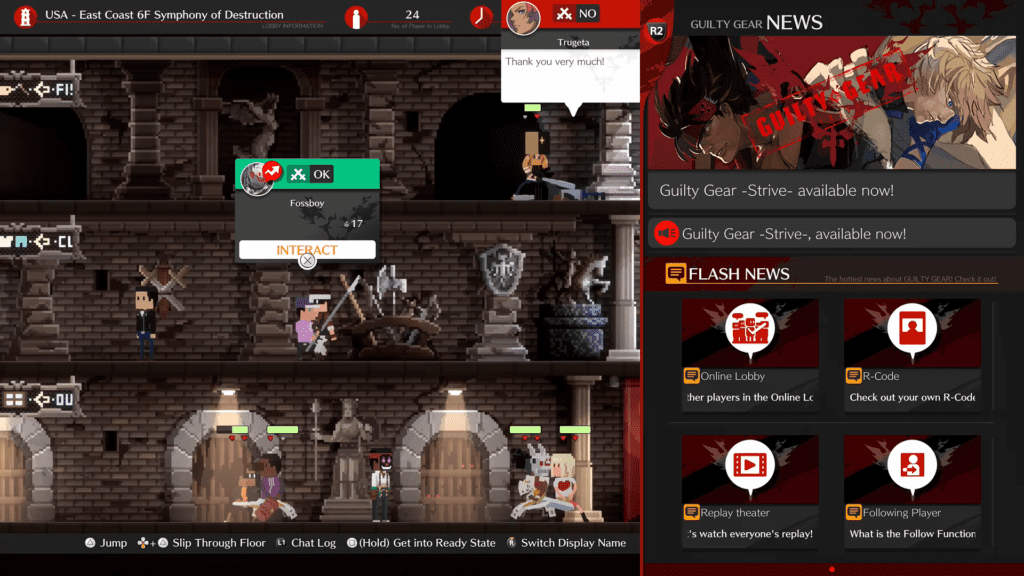
I cannot stress enough how much this system needs to change. I don’t like the design or aesthetic of the lobby in general, but if I have to deal with it, at least make if functional. Which is why for those of you reading this after playing the open beta – please, for the love of the gods – follow this link to the official Guilty Gear twitter page and take the feedback survey. Even if you didn’t play the beta, submit a survey anyway and tell Arc System Works they need to fix the lobby system ahead of release.
Some saved rounds
Outside of the lobby issues, I am genuinely excited to play Guilty Gear Strive on April 9th. That said, there is a few (not so) minor details that should be modified ahead of release. Perhaps forgoing a redesign of this tramp stamp UI they got going on here, there’s this tiny meter right beneath the Burst Gauge. This is your RISC Gauge, and this is one of the most important meters in the game.
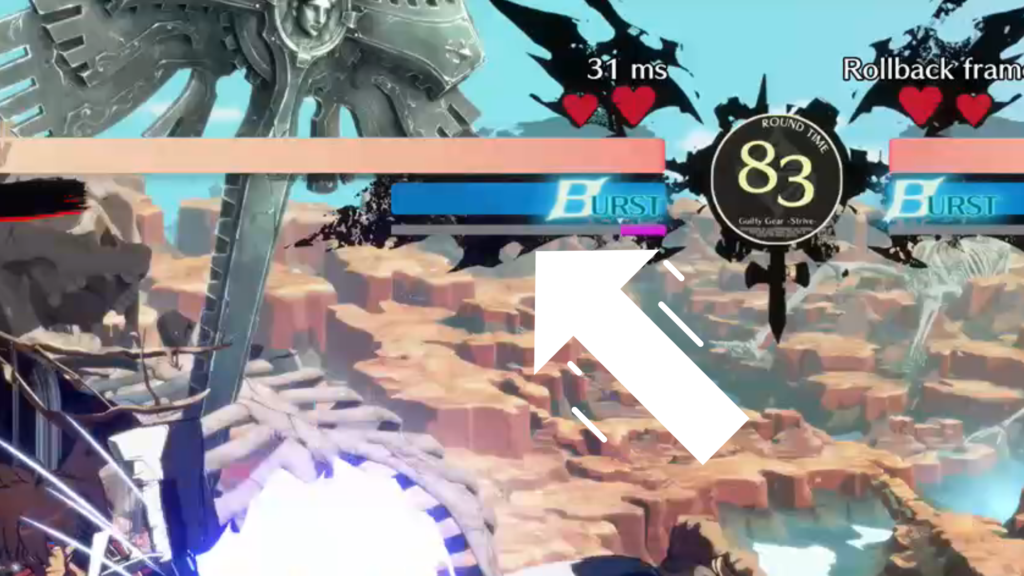
RISC Level is a modifier that rises dependent on how long you’re in blockstun: the longer you remain in blockstun, the more the RISC Gauge rises. Should you be hit when the RISC Gauge is above 50 percent, each hit will be a counter hit until the RISC Gauge depletes to below 50 percent. My question is why would you make one of the most important meters in the game – one directly tied to damage scaling – so impossible to read. I have a split second to glance over to my meters on the top and can barely tell the difference between the Burst Gauge and the RISC Gauge as they begin to blend in together.
While it’s been promised that private rooms for up to nine players have been promised, I would also like to be assured that a rematch option be available for Park lobbies. It’s cool that there’s options to follow players after a match – that makes it easier to find your friends in the 50+ casual lobbies – but I would prefer not to get booted back into the lobby, to then run the risk of teleporting or getting stuck in the R-Code menu.
We’re ready to ROCK!!!
All things considered, Guilty Gear Strive’s open beta proved to be a near life changing experience. Arc System Works’ rollback netcode has set the industry standard for every fighting game developer out there. Gameplay feels fluid and natural, making it very accessible to new players trying the series out for the first time. It has one of the most robust training mode systems in any fighting game I’ve ever played, which could be perfected if they include frame data in the final build.
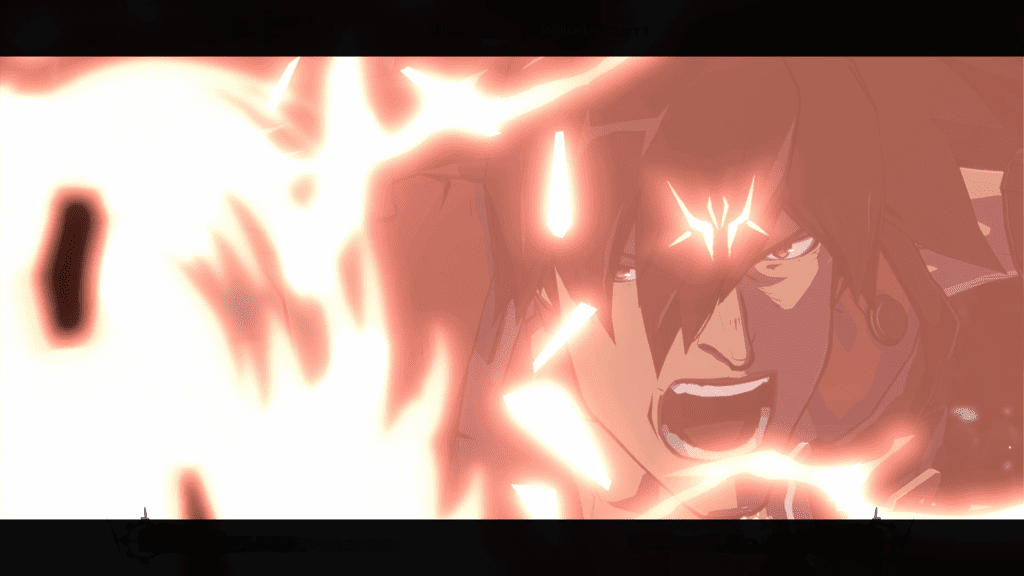
That’s not even counting the additional features not shown in the beta, such as a fleshed out mission mode, which will teach players combos and character specific match-ups. If they could loosen the lobby system millstone they’ve tied around their neck, Guilty Gear Strive has the makings of being quite possibly being the greatest fighting game this generation, or at the very least, that beginning of a new era.
Guilty Gear Strive releases for the PlayStation 4, PlayStation 5 and PC on April 9th.

